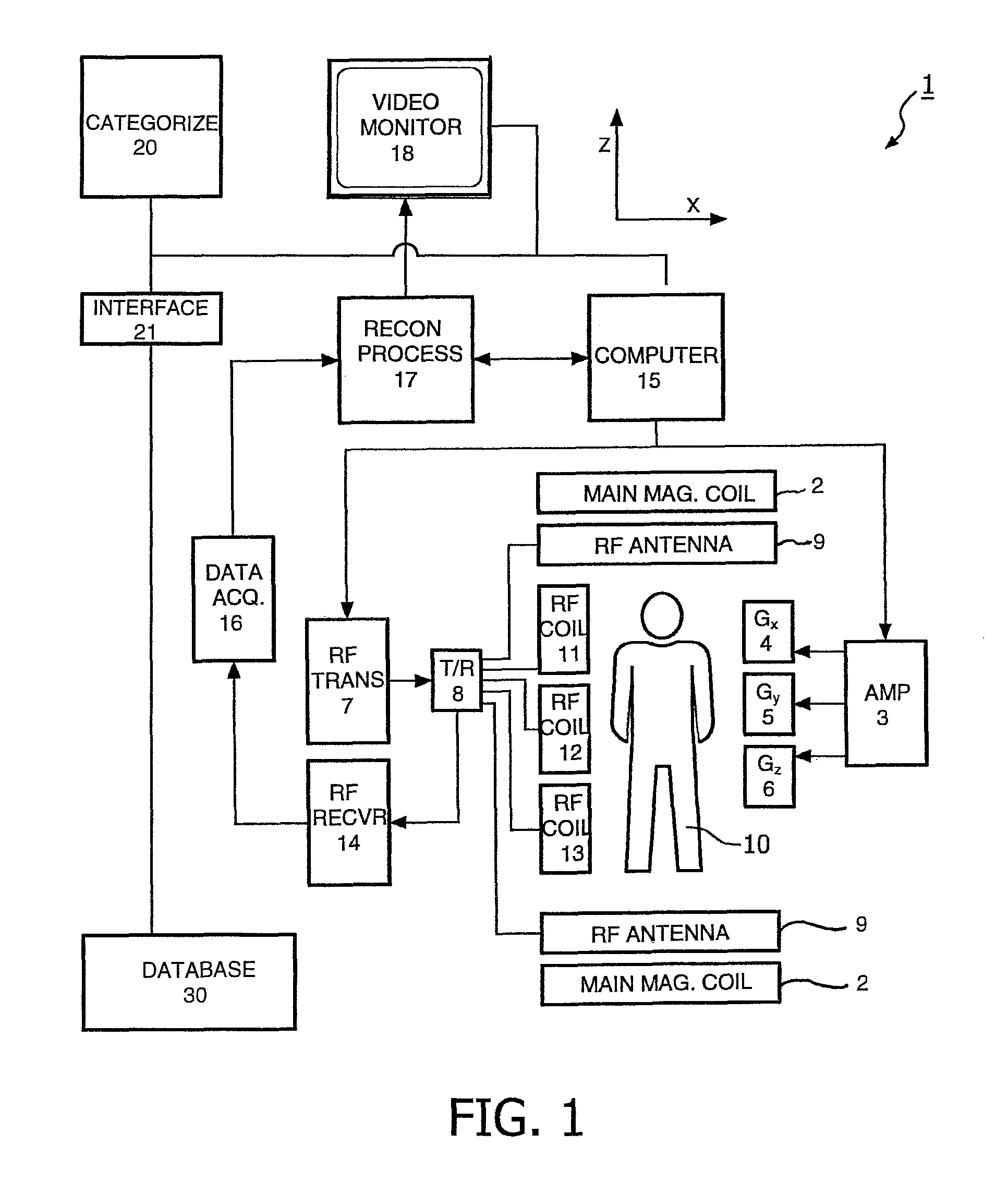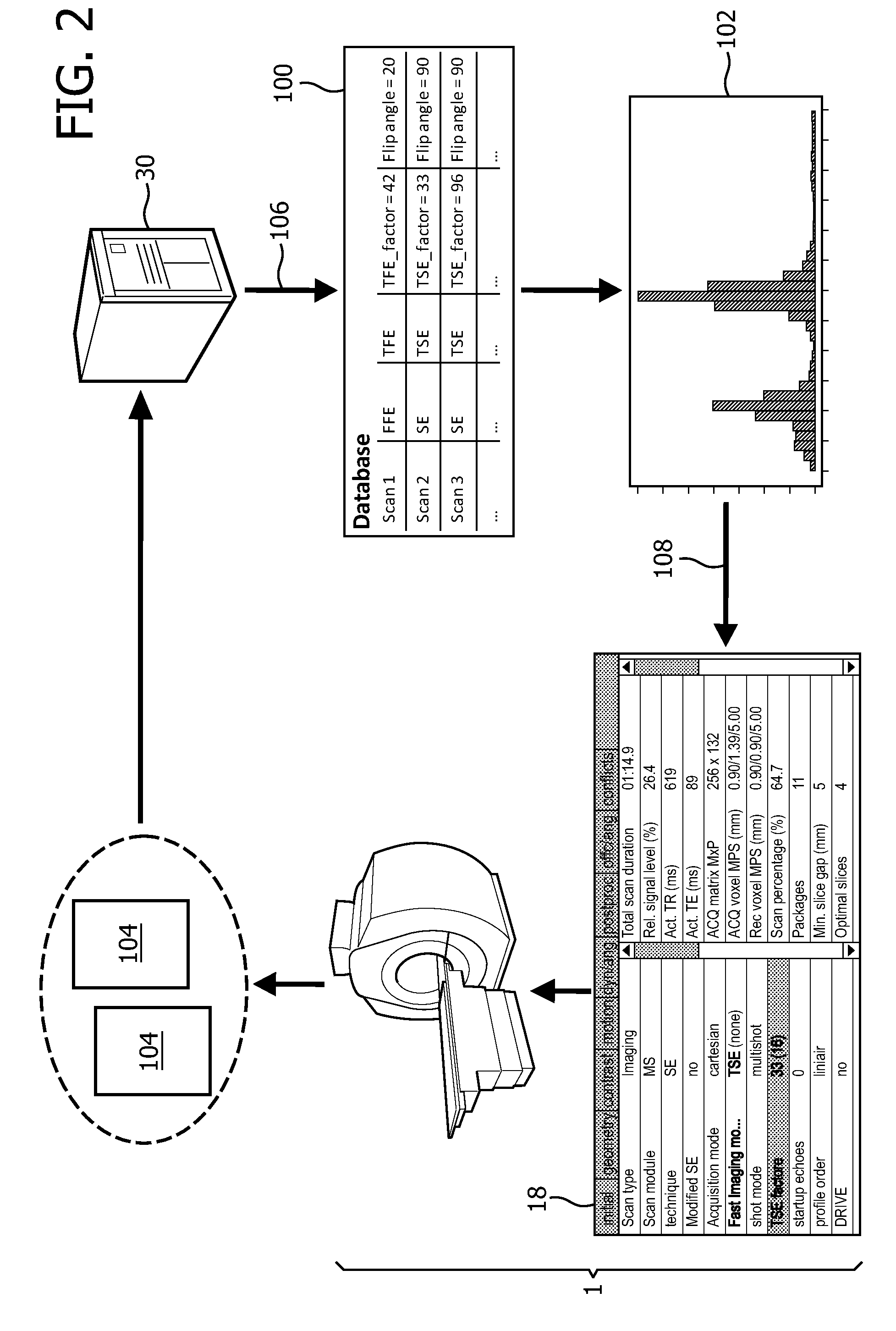Magnetic resonance examination system with preferred settings based on data mining
a magnetic resonance imaging and data mining technology, applied in the direction of reradiation, measurement using nmr, instruments, etc., can solve the problems of inferior image quality below the requested quality standards, difficult and tedious scan parameters selection, and inability to use advanced imaging techniques
- Summary
- Abstract
- Description
- Claims
- Application Information
AI Technical Summary
Benefits of technology
Problems solved by technology
Method used
Image
Examples
Embodiment Construction
[0044]With reference to FIG. 1, an MR imaging system 1 is shown. The system comprises superconducting or resistive main magnet coils 2 such that a substantially uniform, temporarily constant main magnetic field BO is created along a z-axis through an examination volume.
[0045]The magnetic resonance system applies a series of RF pulses and switched magnetic field gradients to invert or excite nuclear magnetic spins, induce magnetic resonance, refocus magnetic resonance, manipulate magnetic resonance, spatially or otherwise encode the magnetic resonance, saturate spins and the like to perform MR imaging.
[0046]More specifically, a gradient pulse amplifier 3 applies current pulses to selected ones of whole body gradient coils 4, 5 and 6 along x, y and z-axes of the examination volume. An RF transmitter 7 transmits RF pulses or pulse packets, via a send / receive switch 8 to an RF antenna 9 to transmit RF pulses into the examination volume. A typical MR imaging sequence is composed of a pac...
PUM
 Login to View More
Login to View More Abstract
Description
Claims
Application Information
 Login to View More
Login to View More - R&D
- Intellectual Property
- Life Sciences
- Materials
- Tech Scout
- Unparalleled Data Quality
- Higher Quality Content
- 60% Fewer Hallucinations
Browse by: Latest US Patents, China's latest patents, Technical Efficacy Thesaurus, Application Domain, Technology Topic, Popular Technical Reports.
© 2025 PatSnap. All rights reserved.Legal|Privacy policy|Modern Slavery Act Transparency Statement|Sitemap|About US| Contact US: help@patsnap.com



